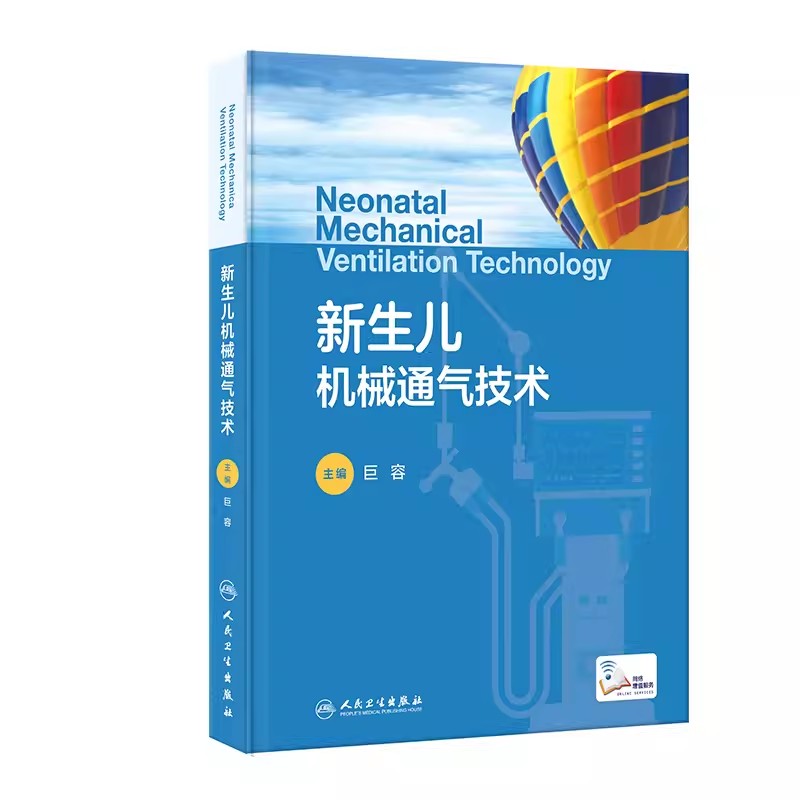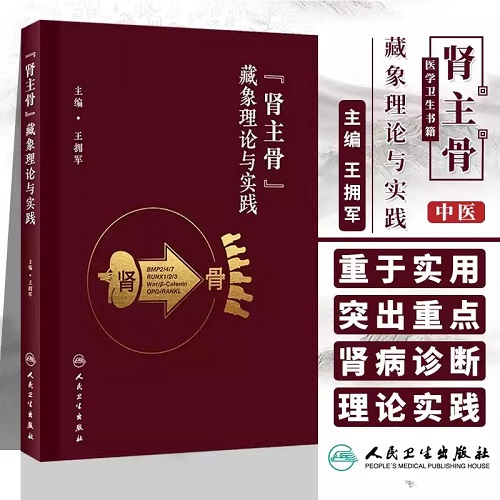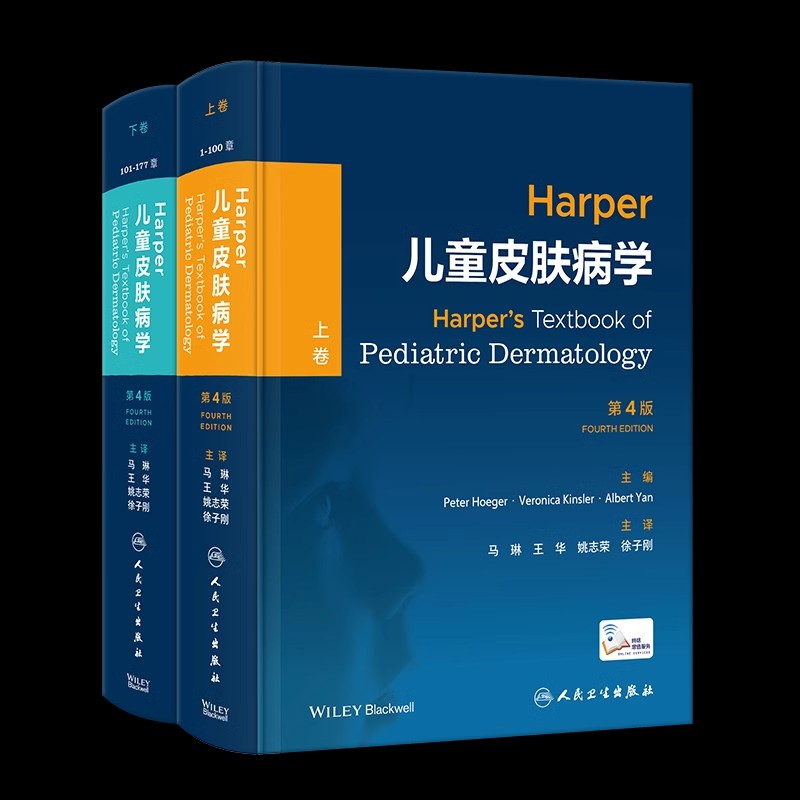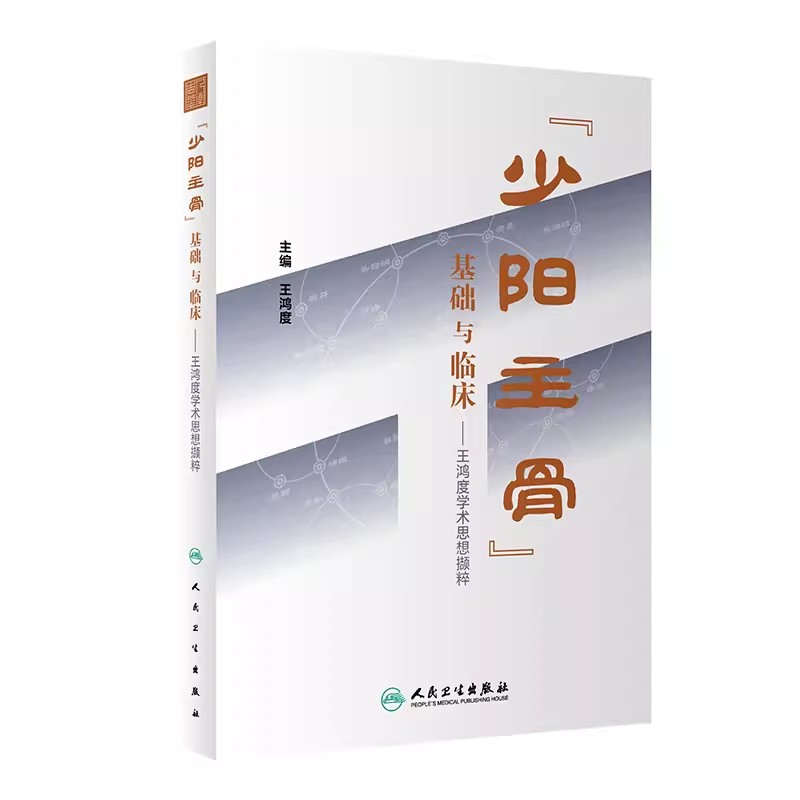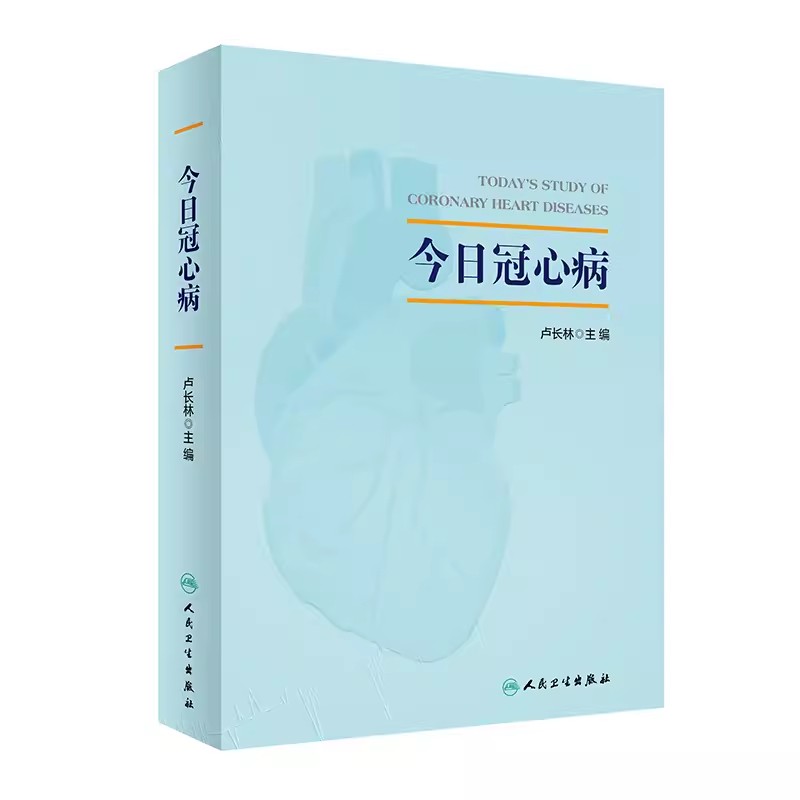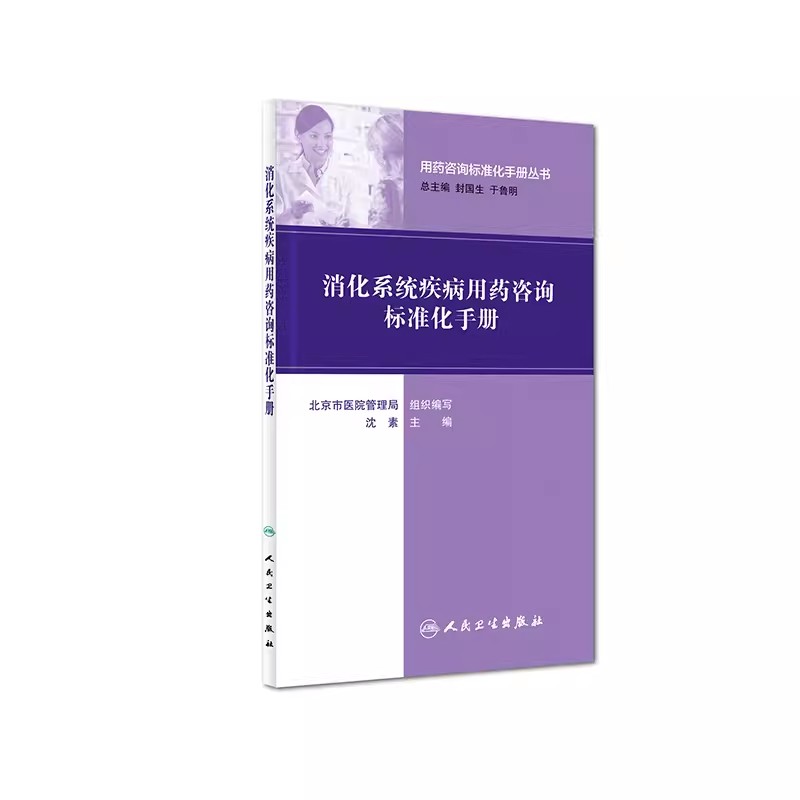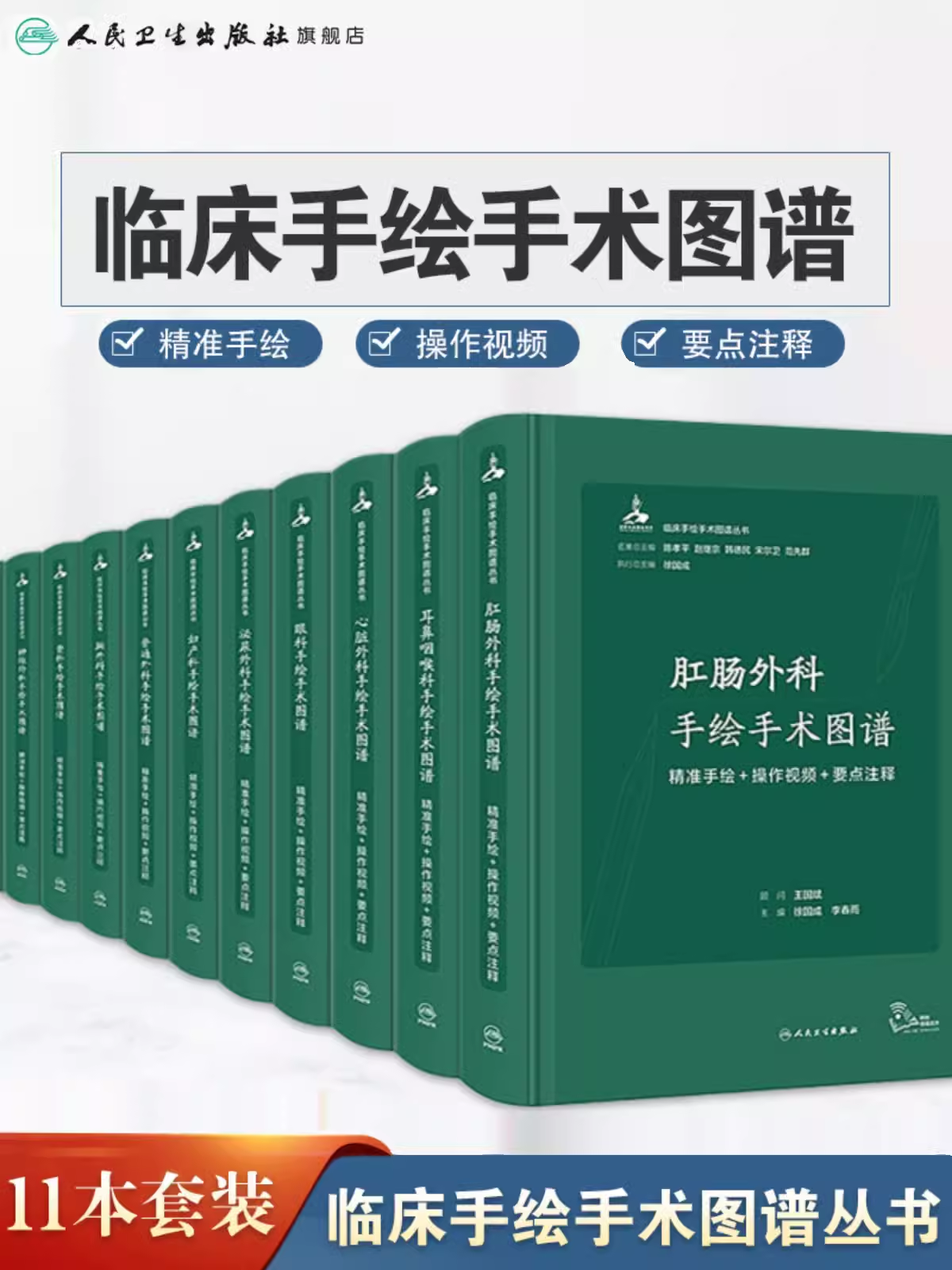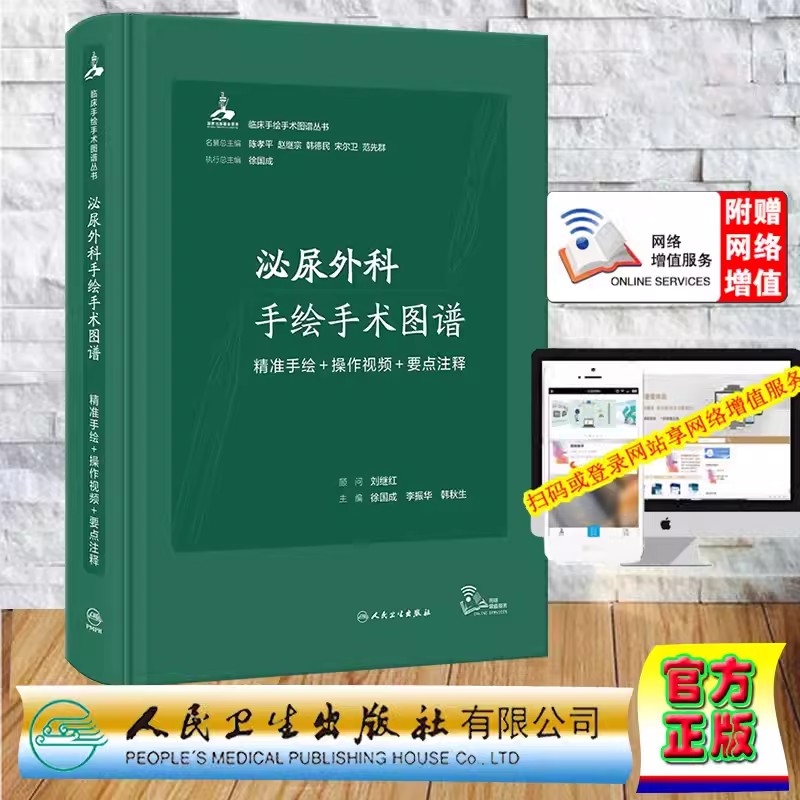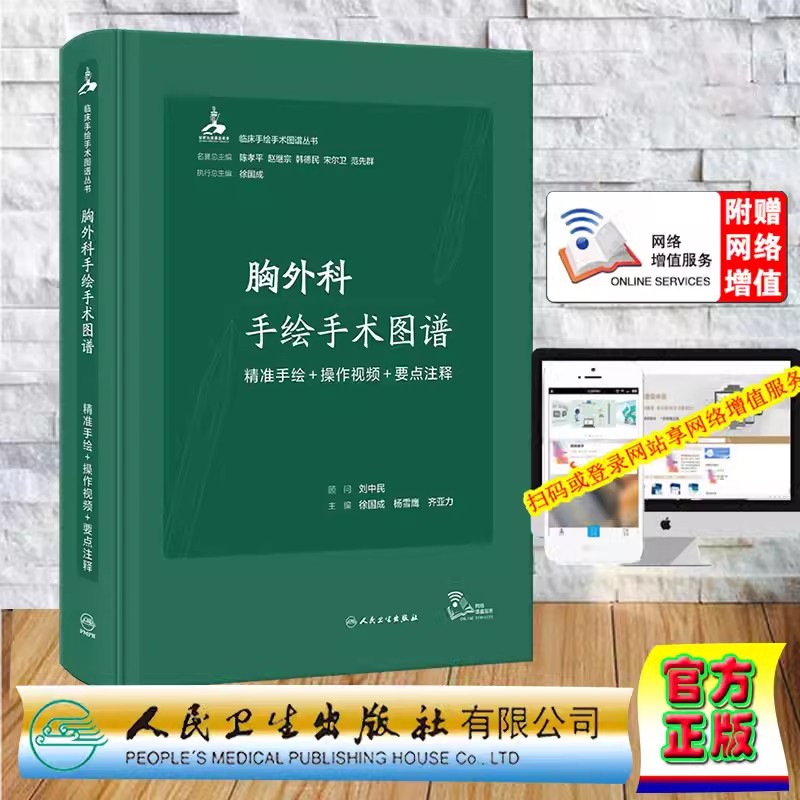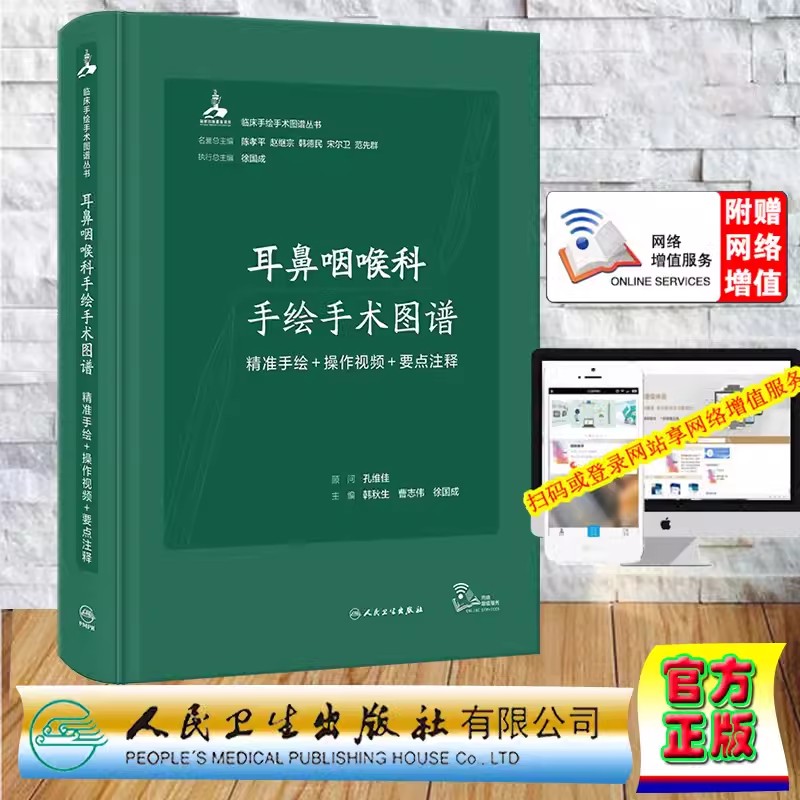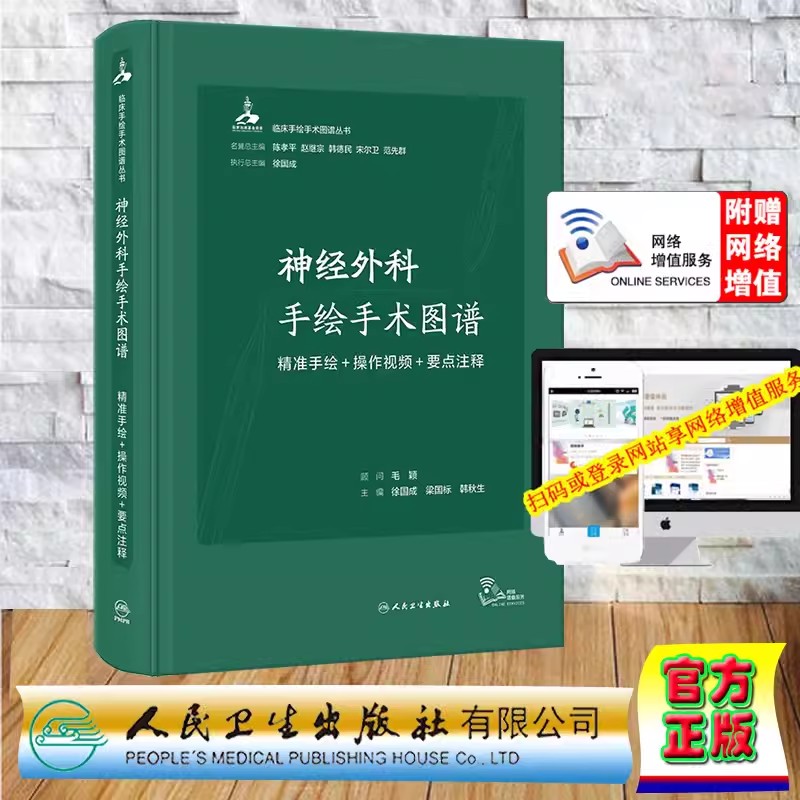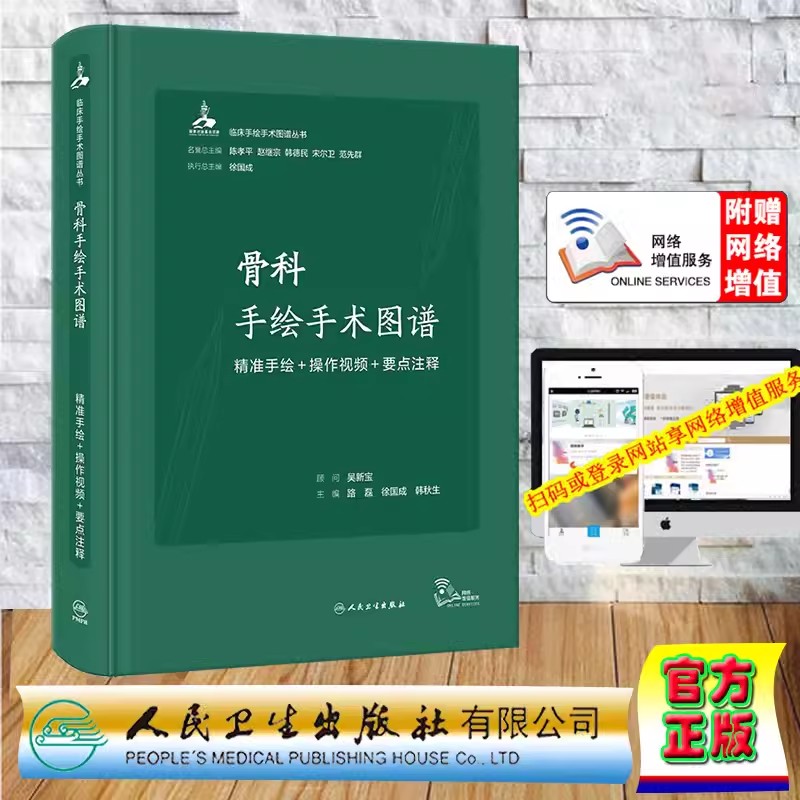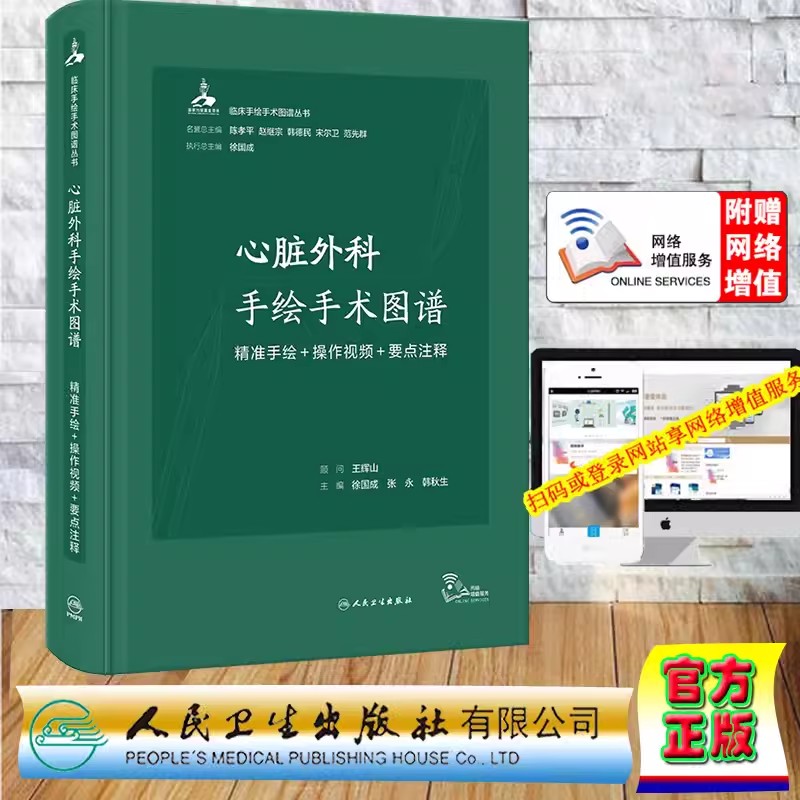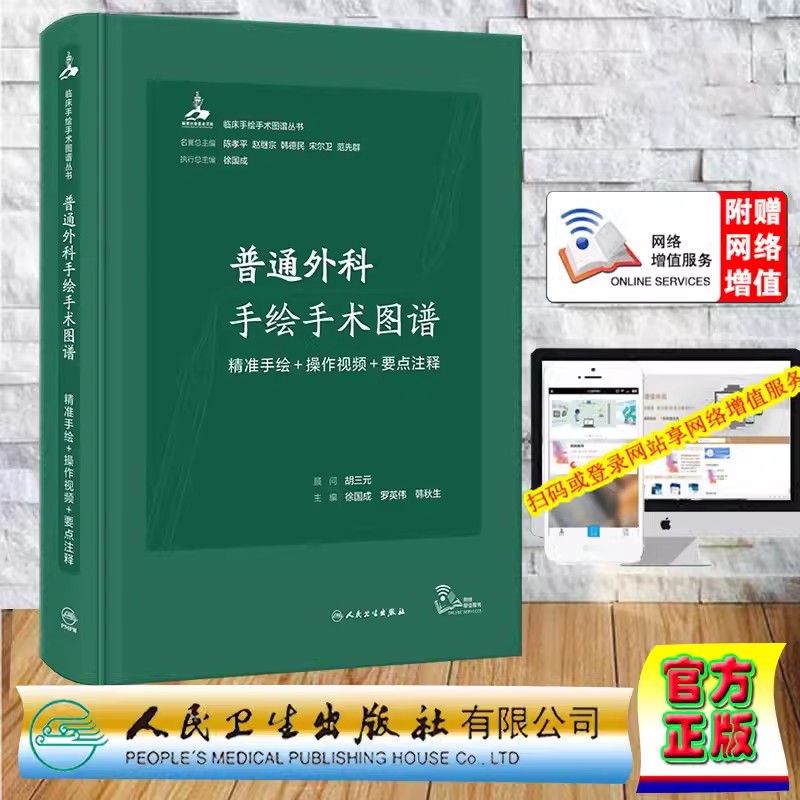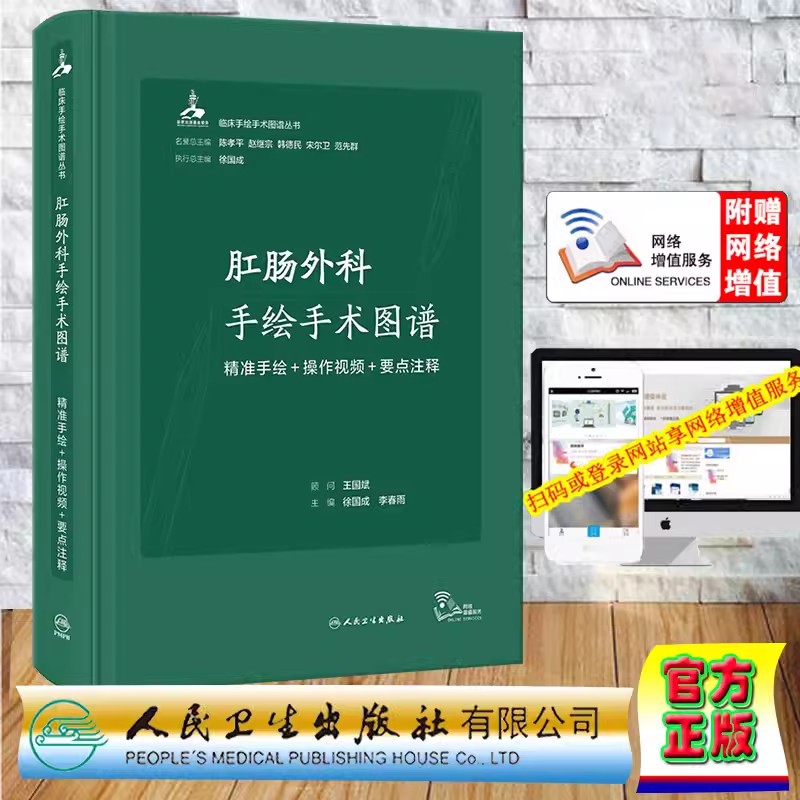
麻醉与围术期医学 第2版 外国医学留学生麻醉学参考用书Textbook of Anesthesiology and Perioperative Medicine 2e[英文版]
内容简介
北京考试书店提供医学参考书考试教材,医学参考书考试用书以及2024年医学参考书考试真题,考试试卷,模拟试卷
麻醉与围术期医学 第2版 外国医学留学生麻醉学参考用书Textbook of Anesthesiology and Perioperative Medicine 2e[英文版]
书名:[英文版]麻醉与围术期医学 第2版
作者:熊利泽 俞增贵 左志义
出版社:人民卫生出版社
出版时间:2023年8月
开 本:16开
ISBN:9787117349062
定价:168
本书按照“麻醉与围术期医学”的新理念而编写,体现从麻醉学向围术期医学的转变,内容包括:麻醉学的基本概念、技术、方法;麻醉与围术期的循环、呼吸、体温、水和电解质、血液等管理;麻醉与围术期相关并发症的处理;日间手术及腔镜及微创手术的围术期管理;休克、多器官功能衰竭、心肺脑复苏等;围术期超声应用,营养支持,术后快速康复等;疼痛治疗、麻醉与围术期器官损伤和保护等; 医疗纠纷;传染病疾病手术的围术期防护;麻醉前沿与交叉学科等。编写内容参考最新国内外麻醉学、循证医学、重症医学、疼痛医学以及相关科学文献、指南和专家共识等。每章节后设置临床案例分析,结合以案例及问题为导向的临床教学,具有很好的提高教学质量的效果。本书内容丰富、理念新颖、临床实用,是海外医学留学生和国内麻醉、临床医学、重症医学及疼痛学专业的临床医师的重要英文参考书。
麻醉与围术期医学 第2版 外国医学留学生麻醉学参考用书Textbook of Anesthesiology and Perioperative Medicine 2e[英文版]
书名:[英文版]麻醉与围术期医学 第2版
作者:熊利泽 俞增贵 左志义
出版社:人民卫生出版社
出版时间:2023年8月
开 本:16开
ISBN:9787117349062
定价:168
本书按照“麻醉与围术期医学”的新理念而编写,体现从麻醉学向围术期医学的转变,内容包括:麻醉学的基本概念、技术、方法;麻醉与围术期的循环、呼吸、体温、水和电解质、血液等管理;麻醉与围术期相关并发症的处理;日间手术及腔镜及微创手术的围术期管理;休克、多器官功能衰竭、心肺脑复苏等;围术期超声应用,营养支持,术后快速康复等;疼痛治疗、麻醉与围术期器官损伤和保护等; 医疗纠纷;传染病疾病手术的围术期防护;麻醉前沿与交叉学科等。编写内容参考最新国内外麻醉学、循证医学、重症医学、疼痛医学以及相关科学文献、指南和专家共识等。每章节后设置临床案例分析,结合以案例及问题为导向的临床教学,具有很好的提高教学质量的效果。本书内容丰富、理念新颖、临床实用,是海外医学留学生和国内麻醉、临床医学、重症医学及疼痛学专业的临床医师的重要英文参考书。
本书目录
Chapter 1 Introduction to Anesthesiology and Perioperative Medicine/ 1
1.1 Introduction/ 1
1.2 Evolution of Anesthesiology/ 1
1.2.1 Ancient History of Anesthesia/ 1
1.2.2 History of Early Modern Anesthesia/ 2
1.3 Improvements in the Safety of Anesthesia/ 3
1.4 Scope of Anesthesia Practice/ 3
1.5 How to Learn Anesthesiology/ 4
1.5.1 Standards and Expectations of Anesthesiologists/ 4
1.5.2 Humanistic Knowledge and Humanistic Feelings/ 5
1.5.3 Fostering Passion or Motivation/ 5
1.6 New Practice and Advancement in Anesthesiology and Perioperative Medicine/ 5
References/ 6
Chapter 2 Preanesthetic Evaluation and Preparation/ 7
2.1 Preoperative Visit and Anesthetic Clinic/ 7
2.1.1 Preoperative Visit/ 8
2.1.2 Anesthesia Clinic/ 9
2.2 Procedures and Methods of Evaluation and Risk Assessment/ 10
2.2.1 Procedures of Evaluation/ 10
2.2.2 Methods of Evaluation/11
2.3 Cardiac Risk Assessment for Patients Undergoing Noncardiac Surgery/ 12
2.4 Pulmonary Risk Assessment for Patients Undergoing Noncardiac Surgery/ 16
2.5 Perioperative Blood Glucose Management/ 18
2.6 Thyroid Function for Patients Undergoing Noncardiac Surgery/ 19
2.7 Kidney Function Assessment for Patients Undergoing Noncardiac Surgery/ 19
2.8 Liver Function Assessment for Patients Undergoing Noncardiac Surgery/ 20
2.9 Coagulation Assessment for Patients Undergoing Noncardiac Surgery/ 21
2.10 Nutrition Status Assessment for Patients Undergoing Cardiac and
Noncardiac Surgery/ 22
2.11 Preparation and Medication before Anesthesia/ 23
Case Study/ 25
References/ 26
Chapter 3 General Anesthesia/ 30
3.1 General Anesthetics and Related Drugs/ 30
3.1.1 Inhalation Anesthetics/ 30
3.1.2 Intravenous Anesthetics/ 31
3.1.3 Muscle Relaxants and Antagonists/ 35
3.1.4 Opioids and the Opiate Receptor Antagonists/ 37
3.2 Mechanisms of General Anesthesia/ 39
3.2.1 Theories/ 40
3.2.2 Potential Molecular and Anatomical Targets/ 40
3.2.3 Anatomical Targets and Neural Circuits/ 41
3.3 Administration of General Anesthesia/ 43
6 Contents
3.3.1 Induction of Anesthesia/ 43
3.3.2 Maintenance of Anesthesia/ 44
3.3.3 Judgment of the Depth of General Anesthesia/ 46
3.3.4 Emergence from General Anesthesia/ 47
Case Study/ 47
References/ 48
Chapter 4 Local Anesthesia/ 52
4.1 Local Anesthetics/ 52
4.1.1 Classification and Physical and Chemical Properties/ 52
4.1.2 Mechanisms of Action/ 54
4.1.3 Clinical Pharmacology/ 54
4.1.4 Tissue Toxicity of Local Anesthetics/ 56
4.2 Local Anesthesia/ 57
4.2.1 Topical Anesthesia/ 57
4.2.2 Infiltration Anesthesia/ 57
4.2.3 Systemic Application of Local Anesthetics/ 57
4.2.4 Regional Block/ 58
4.2.5 Neuraxial Block/ 59
4.3 Toxicity of Local Anesthetics and its Management/ 61
4.3.1 Clinical Manifestations/ 61
4.3.2 Toxicity Effects on the Cardiovascular System/ 61
4.3.3 Features of Local Toxicity in the Cardiovascular System/ 62
4.3.4 Management of Local Anesthetic
Systemic Toxicity (LAST)/ 62
Case Study/ 62
Bibliography/ 63
Chapter 5 Neuraxial Anesthesia/ 64
5.1 Anatomy/ 64
5.1.1 Skeletal Structure of the Spinal Canal/ 64
5.1.2 Soft Tissues Outside the Spinal Canal/ 64
5.1.3 Spinal Cord and Spinal Nerves/ 65
5.1.4 Entocele and the Interspace of the Spinal Canal/ 66
5.2 Mechanisms and Physiological
Effects of Neuraxial Anesthesia/ 66
5.2.1 Mechanisms/ 66
5.2.2 Cardiovascular Effects/ 67
5.2.3 Respiratory Effects/ 67
5.2.4 Gastrointestinal Physiology/ 67
5.2.5 Endocrine Physiology/ 67
5.3 Clinical Applications/ 68
5.3.1 Indications/ 68
5.3.2 Contraindications/ 68
5.4 Epidural Anesthesia/ 68
5.4.1 Overview/ 68
5.4.2 Puncture Techniques/ 69
5.4.3 Test Dose/ 70
5.4.4 Factors Influencing the Segments of the Block/ 70
5.4.5 Drugs for Epidural Anesthesia/ 71
5.4.6 Administration/ 71
5.4.7 Adjustment of pH for Local Anesthetics/ 71
5.4.8 Additives to Local Anesthetics for Epidural Blocking/ 71
5.5 Spinal Anesthesia (Subarachnoid Anesthesia)/ 71
Contents 7
5.5.1 Puncture Techniques/ 72
5.5.2 Block Segments/ 73
5.5.3 Drug Choice/ 74
5.5.4 Additives/ 74
5.5.5 Differences between Spinal Anesthesia and Epidural Anesthesia/ 75
5.6 Combined Spinal-Epidural Anesthesia/ 75
5.6.1 CSEA for Obstetrical Anesthesia/ 76
5.6.2 CSEA for Geriatric Anesthesia/ 76
5.7 Complications of Neuraxial Anesthesia/ 76
5.7.1 Complications of Spinal Anesthesia/ 76
5.7.2 Complications of Epidural Anesthesia/ 80
5.8 Ultrasound-guided Neuraxial Anesthesia/ 81
5.8.1 Introduction/ 81
5.8.2 Ultrasound-Guided Intradiscal Block/ 82
Case Study/ 84
Bibliography/ 84
Chapter 6 Peripheral Nerve Blocks and Truncal Blocks under
Ultrasound Guidance/ 85
6.1 Cervical Plexus Block/ 85
6.1.1 Anatomy/ 85
6.1.2 Superficial Cervical Plexus Block/ 85
6.1.3 Deep Cervical Plexus Block/ 87
6.2 Upper Extremity Blocks/ 87
6.2.1 Anatomy/ 87
6.2.2 Interscalene Brachial Plexus Block/ 87
6.2.3 Supraclavicular Brachial Plexus Block/ 89
6.2.4 Infraclavicular Brachial Plexus Block/ 90
6.2.5 Axillary Brachial Plexus Block/ 93
6.3 Lower Extremity Blocks/ 94
6.3.1 Anatomy/ 94
6.3.2 Lumbar Plexus Block/ 95
6.3.3 Femoral Nerve Block/ 99
6.3.4 Sciatic Nerve Block/ 99
6.4 Truncal Blocks/ 103
6.4.1 Thoracic Paravertebral Block/ 103
6.4.2 Serratus Anterior Plane Block/ 106
6.4.3 Transversus Abdominis Plane Block/ 108
6.4.4 Rectus Sheath Block/ 109
6.4.5 Quadratus Lumborum Block/ 110
6.4.6 Erector Spinae Plane Block/ 113
Case Study/ 115
References/ 116
Chapter 7 Sedation Service and Monitoring Anesthesia Care/ 118
7.1 Definitions/ 118
7.2 Commonly Used Sedatives, Physiological Effects, and Antagonism/ 119
7.3 Indications and Patient Selection/ 121
7.4 Monitoring/ 122
7.5 Common Sedation Techniques, Complications, and Risk Management/ 122
7.6 Monitored Anesthesia Care/ 123
Case Study/ 123
References/ 124
8 Contents
Chapter 8 Acupuncture-Medicine Balanced Anesthesia and
Perioperative Medicine/ 125
8.1 Acupuncture Technique and Global Perspective/ 125
8.1.1 History of Acupuncture and Acupuncture-Related Techniques/ 125
8.1.2 Global Acceptance of Acupuncture/ 127
8.2 History of Acupuncture Anesthesia in China/ 128
8.3 Research on the Mechanisms of Acupuncture-Medicine Balanced Anesthesia/ 128
8.3.1 Neurophysiological Studies/ 129
8.3.2 CNS Imaging Studies/ 130
8.4 Acupuncture-Medicine Balanced Anesthesia/ 130
8.4.1 Balance between the Pros and Cons of Anesthetics/ 131
8.4.2 Balance of Vital Organs Function/ 133
8.4.3 Enhanced Recovery and Long-term Outcomes/ 134
8.4.4 Optimization of Acupuncture-Anesthetic Balanced Anesthesia/ 135
8.5 Perspectives of Acupuncture-Anesthetic Balanced Anesthesia/ 135
Case Study/ 136
Bibliography/ 137
Chapter 9 Airway Evaluation and Management/ 139
9.1 Airway Evaluation/ 139
9.1.1 Airway Anatomy/ 139
9.1.2 Airway Evaluation/ 141
9.2 Anesthesia for Airway Management/ 143
9.2.1 Preoxygenation for Anesthesia/ 143
9.2.2 Anesthesia Induction with a Neuromuscular Blockade/ 143
9.2.3 Rapid Sequence Induction/ 144
9.2.4 Intravenous Induction without a Neuromuscular Blockade/ 144
9.2.5 Awake Intubation/ 145
9.2.6 Endotracheal Tube Changes/ 146
9.3 Methods to Maintain a Patent Airway/ 146
9.3.1 The Head-tilt Chin-lift Maneuver and the Oral Airway/ 146
9.3.2 Pharyngeal Airway/ 147
9.3.3 Endotracheal Intubation/ 147
9.3.4 Laryngeal Mask Airway/ 150
9.3.5 Esophageal-Tracheal Airway/ 152
9.3.6 Videolaryngoscopes/ 152
9.3.7 Tracheostomy/ 152
9.4 Difficult Airway and Emergency Airway Techniques/ 152
9.4.1 Definition and Evaluation of Difficult Airway/ 152
9.4.2 Management of the Difficult Airway and Emergency Airway/ 153
9.4.3 Emergency Airway Techniques/ 155
9.5 Management of Tracheal Extubation/ 156
9.5.1 Extubation Plan/ 156
9.5.2 Extubation Preparation/ 157
9.5.3 Extubation Procedure/ 157
9.5.4 Post-extubation Management/ 158
Case Study/ 158
Bibliography/ 159
Chapter 10 Monitoring during Anesthesia/ 160
10.1 Introduction/ 160
10.2 Standard Monitoring Modalities/ 160
Contents 9
10.2.1 Qualified Anesthesia Provider/ 160
10.2.2 Basic Monitoring during Anesthesia/ 161
10.2.3 Additional Monitoring during Anesthesia/ 162
10.3 Hemodynamic Monitoring/ 162
10.3.1 Blood Pressure/ 163
10.3.2 Central Venous Pressure/ 166
10.3.3 Cardiac Output/ 168
10.3.4 Pulmonary Artery Pressure and Pulmonary Artery Occlusion
Pressure/ 170
10.3.5 Echocardiography/ 171
10.3.6 Electrocardiography/ 172
10.4 Respiratory Function Monitoring/ 173
10.4.1 Mandatory Respiratory Monitors/ 173
10.4.2 Oxygenation/ 173
10.4.3 Capnography and Spirometry/ 174
10.4.4 Respiratory Mechanics/ 175
10.5 Analysis of Arterial Blood Gas/ 175
10.5.1 Sample Source and Collection/ 175
10.5.2 Temperature Correction/ 175
10.6 Neuromuscular Blockade Monitoring/ 176
10.6.1 Indications/ 176
10.6.2 Contraindications and Complications/ 176
10.6.3 Principles of Measurement and Devices/ 176
10.6.4 Clinical Considerations/ 177
10.7 Depth of Anesthesia/ 177
10.7.1 Clinical Observation/ 177
10.7.2 Electroencephalogram (EEG) and EEG-Based Indices/ 179
10.7.3 Evoked Potentials/ 179
17.3.4 Malignant Hyperthermia/ 309
17.3.5 Anaphylactic and Anaphylactoid Reactions/ 310
17.3.6 Hypoglycemia/ 311
17.3.7 Blindness and Eye Injury/ 312
17.3.8 Position-Related Nerve Injury/ 313
17.3.9 Skin Injury/ 314
Case Study/ 315
References/ 317
Chapter 18 Anesthesia for Ambulatory Surgery/ 319
18.1 Definitions of Ambulatory Surgery/ 319
18.2 Patients’ Selection Criteria/ 320
18.2.1 Procedures that Can be Performed on an Ambulatory Basis/ 320
18.2.2 Suitability of a Patient for Ambulatory Surgery/ 320
18.3 Pre-anesthetic Visit and Evaluation/ 323
18.3.1 Ways of Pre-anesthetic Visit and Evaluation/ 323
18.3.2 Contents of Pre-anesthetic Visit and Evaluation/ 324
18.4 Anesthetic Management of Ambulatory Surgery/ 324
18.4.1 Anesthetic Staff and Anesthetic Equipment/ 324
18.4.2 Choice of Anesthetic Methods/ 325
18.4.3 Selection of Anesthetics/ 327
18.5 Treatments during the Recovery Period and Follow-up Visits/ 329
18.5.1 Recovery from Ambulatory Anesthesia/ 329
18.5.2 Postoperative Analgesia/ 331
18.5.3 Postoperative Nausea and Vomiting/ 334
18.5.4 Follow-up Visit/ 335
Case Study/ 335
References/ 336
Chapter 19 Perioperative Administration of Endoscopic and
Minimally Invasive Procedures/ 344
19.1 Perioperative Administration of Laparoscopic Surgery/ 344
19.1.1 Pathophysiology of Laparoscopic Surgery/ 344
19.1.2 Anesthetic Management of Laparoscopic Surgery/ 345
19.1.3 Prevention and Treatment of Complications Associated with
Pneumoperitoneum/ 347
19.1.4 Postanesthetic Management of Laparoscopic Surgery/ 347
19.2 Perioperative Administration of Thoracoscopic Surgery/ 348
19.2.1 Characteristics and Indications for Thoracoscopic Surgery/ 348
19.2.2 Lung Isolation Techniques/ 349
19.2.3 Respiratory Management of OLV/ 352
19.2.4 Fluid Management/ 353
19.2.5 Postoperative Analgesia/ 354
19.3 Anesthesia for Endoscopic Gastrointestinal Procedures/ 354
19.4 Anesthesia for Bronchoscopy Procedures/ 356
19.5 Anesthesia for Interventional Cardiology Procedures/ 357
19.5.1 Electrophysiology Studies and Catheter Ablation/ 357
19.5.2 Percutaneous Transcatheter Cardiac Valve Intervention/ 357
19.6 Anesthesia for Image-Guided Neuroradiology Procedures/ 359
Case Study/ 360
References/ 361
Chapter 20 Shock/ 365
20.1 Introduction/ 365
20.1.1 Definition/ 365
20.1.2 Classification/ 365
20.1.3 Pathophysiology/ 367
20.1.4 Signs and Symptoms of Shock/ 369
20.1.5 Clinical Presentations/ 369
20.2 Monitors, Biomarkers and Imaging Studies/ 370
20.2.1 Clinical Parameters/ 370
20.2.2 Laboratory Parameters/ 370
20.2.3 Biomarkers/ 371
20.2.4 Imaging Studies/ 371
20.3 Prevention, Treatment and Outcomes of Shock/ 371
20.3.1 Prevention of Shock/ 371
20.3.2 Management of Shock/ 372
20.3.3 Predicted Outcomes of Shock/ 372
20.4 Commonly Observed Shocks in the Line of Work/ 373
20.4.1 Cardiogenic Shock/ 373
20.4.2 Hypovolemic Shock/ 374
20.4.3 Septic Shock/ 376
20.4.4 Anaphylactic Shock/ 378
Case Study/ 379
References/ 382
Chapter 21 Multiple Organ Dysfunction Syndrome/ 384
21.1 Etiologies of Multi-organ Dysfunction Syndrome/ 384
21.2 Mechanisms of MODS/ 385
21.2.1 Ischemia-Reperfusion Injury and MODS/ 385
21.2.2 Systemic Inflammatory Response
Syndrome and MODS/ 387
21.2.3 Intestinal Motility Theory/ 389
21.3 Clinical Diagnosis, Evaluation, and Monitoring/ 390
21.3.1 Clinical Diagnosis and Stages/ 390
21.3.2 Clinical Evaluation/ 392
21.4 Prevention and Treatment/ 393
Case Study/ 394
References/ 395
Chapter 22 Cardiopulmonary-Cerebral Resuscitation/ 397
22.1 Etiologies and Pathophysiology of Cardiac Arrest/ 397
22.2 Cardiopulmonary Resuscitation/ 398
22.2.1 Physiology of Circulation during Closed-Chest Compression/
398
22.2.2 Basic Life Support/ 399
22.2.3 Advanced Cardiac Life Support/ 404
22.3 Post-resuscitation Care/ 409
22.3.1 Hemodynamic Monitoring and Maintenance/ 409
22.3.2 Respiratory Function Monitoring and Maintenance/ 411
22.3.3 Renal Function Monitoring and Support/ 411
22.3.4 Maintenance of Fluid, Electrolyte, and Acid-Base Balance/ 411
22.3.5 Cares for other Systems/ 411
22.4 Cerebral Resuscitation/ 412
22.4.1 Pathophysiology of the Brain/ 412
22.4.2 General Management of Cerebral Resuscitation/ 412
22.4.3 Specific Measures of Cerebral Resuscitation/ 413
22.4.4 Prognostication Following Cardiopulmonary Resuscitation/ 413
22.5 Pediatric CPR/ 413
22.5.1 Characteristics of Pediatric CPR/ 413
22.5.2 CPR in Infants and Children/ 414
22.6 Neonatal CPR/ 415
22.6.1 Basic procedures of neonatal CPR/ 415
22.6.2 Post-resuscitation Care/ 417
Case Study/ 418
References/ 419
Chapter 23 Perioperative Use of Ultrasound/ 420
23.1 Introduction/ 420
23.2 Physics of Ultrasound Imaging/ 421
23.2.1 Properties of Ultrasound Waves/ 421
23.2.2 Ultrasound Transducer/ 421
23.2.3 Ultrasound Imaging/ 422
23.3 Perioperative Echocardiography/
23.3.1 Indications, Risks, and Safety of TEE/ 424
23.3.2 Probe Insertion and Manipulation/ 424
23.3.3 Basic TEE Views/ 426
23.3.4 Common Indications and Diagnosis/ 427
23.4 Point of Care Ultrasound in Critical Care Medicine/ 430
23.4.1 Ultrasound of the Heart/ 430
23.4.2 Ultrasound to Evaluate Volume Status/ 434
23.4.3 Ultrasound of the Lung/ 436
23.4.4 Ultrasound of the Abdomen/ 439
23.4.5 Ultrasound of the Lower Extremity Vascular System/ 441
23.4.6 Airway/ 443
16 Contents
23.4.7 Gastric Ultrasound and Aspiration
Risk Assessment/ 444
23.4.8 Shock Exam/ 446
Case Study/ 447
References/ 449
Chapter 24 Nutritional Support for Patients with Critical Illness/ 451
24.1 Nutrition Assessment/ 451
24.2 Nutrition Balance/ 451
24.2.1 Assessment Technique/ 452
24.2.2 Nitrogen Requirement/ 452
24.3 Enteral Feeding/ 454
24.3.1 Indications and Specifications/ 454
24.3.2 Selection of the Enteral Formula/ 455
24.3.3 Delivery and Administration of Enteral Nutrition/ 456
24.4 Parenteral Nutrition/ 456
24.4.1 Indications and Specifications/ 456
24.4.2 Vitamins and Trace Elements/ 456
24.4.3 Effects on Fluid and Acid-Base Balance and Glucose Homeostasis/ 457
24.4.4 Central Venous Access/ 457
24.4.5 Impaired “Disposal Systems”/ 457
24.5 Measuring the Nutritional Goal Achievement/ 457
24.5.1 Serial Markers to Measure/ 457
24.5.2 Reasons for the Underachievement
of Goals/ 458
24.5.3 Clinical Pearls and Pitfalls/ 458
24.5.4 “Designer” Enteral Feedings: Facts and Myths/ 458
24.5.5 Hepatic Formula/ 458
24.5.6 Renal Formula/ 458
24.5.7 Pulmonary Formula/ 459
24.5.8 Metabolic Stress (critical care) Formula/ 459
24.5.9 Glycemic Control Formula/ 459
24.6 Special Topic: Nutrition for Immunomodulation Formula/ 459
24.6.1 Glutamine/ 460
24.6.2 Arginine/ 460
24.6.3 Nucleotides/ 460
24.6.4 Structured Lipids/ 460
24.6.5 Antioxidant Therapy/ 460
24.7 SARS-CoV-2 Infection, Covid-19, and Immune Response/ 461
24.7.1 There are Many Challenges in Providing Adequate Nutrition
for Patients with COVID-19 and Critically Ill/ 461
24.7.2 Nutrition Plays Multiple Roles in Supporting the Immune System/ 461
24.7.3 Poor Nutrition May Not Provide
Enough of the Nutrients Needed
by the Immune System/ 462
Case Study/ 462
Bibliography/ 464
Chapter 25 Pain/ 467
25.1 Pathophysiology of Pain/ 467
25.1.1 Neural Pathways Involved in Pain Signal Processing/ 467
25.1.2 Acute Pain/ 468
25.1.3 Chronic Pain/ 468
25.2 Evaluation of Pain/ 469
25.2.1 Pain Measurement/ 469
Contents 17
25.2.2 Psychological Evaluation/ 470
25.2.3 Electromyography and Nerve Conduction Studies/ 471
25.3 Commonly Used Analgesics/ 471
25.3.1 Nonsteroidal Anti-inflammatory Drugs/ 471
25.3.2 Opioids/ 472
25.3.3 Calcium Channel Blockers/ 473
25.3.4 Sodium Channel Blockers/ 473
25.3.5 Antiepileptics/ 473
25.3.6 Antidepressants/ 474
25.4 Acute Pain Care/ 475
25.4.1 Postoperative Pain Management/ 475
25.4.2 Labor Analgesia/ 476
25.5 Chronic Pain Management/ 479
25.5.1 Introduction/ 479
25.5.2 Common Chronic Pain Syndromes/ 479
25.5.3 Drugs Used in Pain Management/ 481
25.5.4 Interventional Pain Therapies/ 482
25.6 Cancer Pain Care/ 483
25.6.1 Introduction/ 483
25.6.2 Pharmacological Cancer Pain Treatments/ 484
Topic Discussion/ 487
References/ 489
Chapter 26 Enhanced Recovery after Surgery/ 490
26.1 Introduction/ 490
26.2 Components of ERAS Pathways/ 490
26.2.1 Preoperative Considerations/ 490
26.2.2 Intraoperative Interventions/ 493
26.2.3 Perioperative Fluid Therapy/ 496
26.2.4 Postoperative Interventions/ 497
26.3 Challenges to the Implementation
of ERAS Pathways/ 500
Case Study/ 501
References/ 502
Chapter 27 Anesthesia and Perioperative Mortality or Organ Injury/ 506
27.1 Surgical Stress Response/ 506
27.1.1 Immunologic Response/ 506
27.1.2 Metabolic and Neuroendocrine Response/ 507
27.1.3 Effects on the Brain/ 507
27.1.4 Regional Anesthesia Effects on Stress Response/ 507
27.2 Anesthesia and Perioperative Mortality/ 508
27.2.1 Perioperative Mortality/ 508
27.2.2 Risk Factors Associated with Perioperative Mortality/ 508
27.3 Association between Anesthesia
and Organ Injury/ 508
27.3.1 Cardiac Injury/ 509
27.3.2 Renal Injury/ 512
27.3.3 Brain Injury/ 513
27.3.4 Lung Injury/ 516
27.3.5 Hepatic Injury/ 518
Case Study/ 520
References/ 522
18 Contents
Chapter 28 Preventive Measures of Perioperative Infection for COVID-19
and Beyond/ 527
28.1 Introduction/ 527
28.2 COVID-19/ 527
28.2.1 Etiology/ 527
28.2.2 Epidemiology/ 528
28.2.3 Clinical Manifestations/ 528
28.2.4 Precautions for SARS-CoV-2 Infection/ 528
28.2.5 Precautions in Perioperative Settings when Caring for Patients
with Suspected or Confirmed COVID-19/ 528
28.2.6 Workflow for Perioperative Management during the COVID-19
Pandemic/ 529
28.3 Anesthesia Management in the Dedicated Operating Room/ 529
28.3.1 Preoperative Preparation/ 529
28.3.2 Anesthesia Management/ 530
28.4 Postanesthesia Equipment Care and Medical Waste Disposal/ 531
28.4.1 Anesthesia Equipment Care and Operating Room Disinfection/ 531
28.4.2 Disposal of Medical Waste/ 532
28.5 Perioperative Protection of Respiratory Infectious Diseases in Children/ 532
28.5.1 Preoperative Preparation/ 532
28.5.2 Process of Anesthesia/ 533
28.5.3 Postoperative Registration and Follow-up/ 534
28.5.4 Suggestions for the Preparation and Performance of First-aid
and Tracheal Intubation Outside the Operating Room/ 534
28.6 Other Issues Related to COVID/ 535
28.6.1 Suggestions for Central Vein Catheterization/ 535
28.6.2 Suggestions for Sedation under an Anesthetic Monitor Outside
the Operating Room/ 535
28.6.3 Prevention, Surveillance of COVID-19 Infection among
Anesthesia Providers/ 535
28.7 Anesthesiologists amid COVID-19 and Beyond: A Perspective of
the Present and Future Challenges/ 536
References/ 538
Chapter 29 New Frontiers in Anesthesiology/ 539
29.1 General Anesthesia and Brain Health/ 539
29.1.1 General Anesthesia and Developing Brain/ 539
29.1.2 General Anesthesia and Aged Brain/ 542
29.2 Artificial Intelligence in Anesthesiology/ 544
29.2.1 Monitoring Depth of General Anesthesia/ 545
29.2.2 Target-controlled Infusion of Anesthetics/ 545
29.2.3 Prediction of Major Adverse Events/ 546
29.2.4 Ultrasonic Visualization Technology/ 546
29.2.5 Pain Management/ 547
29.2.6 Management of Medical Recourses/ 547
Summary/ 547
References/ 548
1.1 Introduction/ 1
1.2 Evolution of Anesthesiology/ 1
1.2.1 Ancient History of Anesthesia/ 1
1.2.2 History of Early Modern Anesthesia/ 2
1.3 Improvements in the Safety of Anesthesia/ 3
1.4 Scope of Anesthesia Practice/ 3
1.5 How to Learn Anesthesiology/ 4
1.5.1 Standards and Expectations of Anesthesiologists/ 4
1.5.2 Humanistic Knowledge and Humanistic Feelings/ 5
1.5.3 Fostering Passion or Motivation/ 5
1.6 New Practice and Advancement in Anesthesiology and Perioperative Medicine/ 5
References/ 6
Chapter 2 Preanesthetic Evaluation and Preparation/ 7
2.1 Preoperative Visit and Anesthetic Clinic/ 7
2.1.1 Preoperative Visit/ 8
2.1.2 Anesthesia Clinic/ 9
2.2 Procedures and Methods of Evaluation and Risk Assessment/ 10
2.2.1 Procedures of Evaluation/ 10
2.2.2 Methods of Evaluation/11
2.3 Cardiac Risk Assessment for Patients Undergoing Noncardiac Surgery/ 12
2.4 Pulmonary Risk Assessment for Patients Undergoing Noncardiac Surgery/ 16
2.5 Perioperative Blood Glucose Management/ 18
2.6 Thyroid Function for Patients Undergoing Noncardiac Surgery/ 19
2.7 Kidney Function Assessment for Patients Undergoing Noncardiac Surgery/ 19
2.8 Liver Function Assessment for Patients Undergoing Noncardiac Surgery/ 20
2.9 Coagulation Assessment for Patients Undergoing Noncardiac Surgery/ 21
2.10 Nutrition Status Assessment for Patients Undergoing Cardiac and
Noncardiac Surgery/ 22
2.11 Preparation and Medication before Anesthesia/ 23
Case Study/ 25
References/ 26
Chapter 3 General Anesthesia/ 30
3.1 General Anesthetics and Related Drugs/ 30
3.1.1 Inhalation Anesthetics/ 30
3.1.2 Intravenous Anesthetics/ 31
3.1.3 Muscle Relaxants and Antagonists/ 35
3.1.4 Opioids and the Opiate Receptor Antagonists/ 37
3.2 Mechanisms of General Anesthesia/ 39
3.2.1 Theories/ 40
3.2.2 Potential Molecular and Anatomical Targets/ 40
3.2.3 Anatomical Targets and Neural Circuits/ 41
3.3 Administration of General Anesthesia/ 43
6 Contents
3.3.1 Induction of Anesthesia/ 43
3.3.2 Maintenance of Anesthesia/ 44
3.3.3 Judgment of the Depth of General Anesthesia/ 46
3.3.4 Emergence from General Anesthesia/ 47
Case Study/ 47
References/ 48
Chapter 4 Local Anesthesia/ 52
4.1 Local Anesthetics/ 52
4.1.1 Classification and Physical and Chemical Properties/ 52
4.1.2 Mechanisms of Action/ 54
4.1.3 Clinical Pharmacology/ 54
4.1.4 Tissue Toxicity of Local Anesthetics/ 56
4.2 Local Anesthesia/ 57
4.2.1 Topical Anesthesia/ 57
4.2.2 Infiltration Anesthesia/ 57
4.2.3 Systemic Application of Local Anesthetics/ 57
4.2.4 Regional Block/ 58
4.2.5 Neuraxial Block/ 59
4.3 Toxicity of Local Anesthetics and its Management/ 61
4.3.1 Clinical Manifestations/ 61
4.3.2 Toxicity Effects on the Cardiovascular System/ 61
4.3.3 Features of Local Toxicity in the Cardiovascular System/ 62
4.3.4 Management of Local Anesthetic
Systemic Toxicity (LAST)/ 62
Case Study/ 62
Bibliography/ 63
Chapter 5 Neuraxial Anesthesia/ 64
5.1 Anatomy/ 64
5.1.1 Skeletal Structure of the Spinal Canal/ 64
5.1.2 Soft Tissues Outside the Spinal Canal/ 64
5.1.3 Spinal Cord and Spinal Nerves/ 65
5.1.4 Entocele and the Interspace of the Spinal Canal/ 66
5.2 Mechanisms and Physiological
Effects of Neuraxial Anesthesia/ 66
5.2.1 Mechanisms/ 66
5.2.2 Cardiovascular Effects/ 67
5.2.3 Respiratory Effects/ 67
5.2.4 Gastrointestinal Physiology/ 67
5.2.5 Endocrine Physiology/ 67
5.3 Clinical Applications/ 68
5.3.1 Indications/ 68
5.3.2 Contraindications/ 68
5.4 Epidural Anesthesia/ 68
5.4.1 Overview/ 68
5.4.2 Puncture Techniques/ 69
5.4.3 Test Dose/ 70
5.4.4 Factors Influencing the Segments of the Block/ 70
5.4.5 Drugs for Epidural Anesthesia/ 71
5.4.6 Administration/ 71
5.4.7 Adjustment of pH for Local Anesthetics/ 71
5.4.8 Additives to Local Anesthetics for Epidural Blocking/ 71
5.5 Spinal Anesthesia (Subarachnoid Anesthesia)/ 71
Contents 7
5.5.1 Puncture Techniques/ 72
5.5.2 Block Segments/ 73
5.5.3 Drug Choice/ 74
5.5.4 Additives/ 74
5.5.5 Differences between Spinal Anesthesia and Epidural Anesthesia/ 75
5.6 Combined Spinal-Epidural Anesthesia/ 75
5.6.1 CSEA for Obstetrical Anesthesia/ 76
5.6.2 CSEA for Geriatric Anesthesia/ 76
5.7 Complications of Neuraxial Anesthesia/ 76
5.7.1 Complications of Spinal Anesthesia/ 76
5.7.2 Complications of Epidural Anesthesia/ 80
5.8 Ultrasound-guided Neuraxial Anesthesia/ 81
5.8.1 Introduction/ 81
5.8.2 Ultrasound-Guided Intradiscal Block/ 82
Case Study/ 84
Bibliography/ 84
Chapter 6 Peripheral Nerve Blocks and Truncal Blocks under
Ultrasound Guidance/ 85
6.1 Cervical Plexus Block/ 85
6.1.1 Anatomy/ 85
6.1.2 Superficial Cervical Plexus Block/ 85
6.1.3 Deep Cervical Plexus Block/ 87
6.2 Upper Extremity Blocks/ 87
6.2.1 Anatomy/ 87
6.2.2 Interscalene Brachial Plexus Block/ 87
6.2.3 Supraclavicular Brachial Plexus Block/ 89
6.2.4 Infraclavicular Brachial Plexus Block/ 90
6.2.5 Axillary Brachial Plexus Block/ 93
6.3 Lower Extremity Blocks/ 94
6.3.1 Anatomy/ 94
6.3.2 Lumbar Plexus Block/ 95
6.3.3 Femoral Nerve Block/ 99
6.3.4 Sciatic Nerve Block/ 99
6.4 Truncal Blocks/ 103
6.4.1 Thoracic Paravertebral Block/ 103
6.4.2 Serratus Anterior Plane Block/ 106
6.4.3 Transversus Abdominis Plane Block/ 108
6.4.4 Rectus Sheath Block/ 109
6.4.5 Quadratus Lumborum Block/ 110
6.4.6 Erector Spinae Plane Block/ 113
Case Study/ 115
References/ 116
Chapter 7 Sedation Service and Monitoring Anesthesia Care/ 118
7.1 Definitions/ 118
7.2 Commonly Used Sedatives, Physiological Effects, and Antagonism/ 119
7.3 Indications and Patient Selection/ 121
7.4 Monitoring/ 122
7.5 Common Sedation Techniques, Complications, and Risk Management/ 122
7.6 Monitored Anesthesia Care/ 123
Case Study/ 123
References/ 124
8 Contents
Chapter 8 Acupuncture-Medicine Balanced Anesthesia and
Perioperative Medicine/ 125
8.1 Acupuncture Technique and Global Perspective/ 125
8.1.1 History of Acupuncture and Acupuncture-Related Techniques/ 125
8.1.2 Global Acceptance of Acupuncture/ 127
8.2 History of Acupuncture Anesthesia in China/ 128
8.3 Research on the Mechanisms of Acupuncture-Medicine Balanced Anesthesia/ 128
8.3.1 Neurophysiological Studies/ 129
8.3.2 CNS Imaging Studies/ 130
8.4 Acupuncture-Medicine Balanced Anesthesia/ 130
8.4.1 Balance between the Pros and Cons of Anesthetics/ 131
8.4.2 Balance of Vital Organs Function/ 133
8.4.3 Enhanced Recovery and Long-term Outcomes/ 134
8.4.4 Optimization of Acupuncture-Anesthetic Balanced Anesthesia/ 135
8.5 Perspectives of Acupuncture-Anesthetic Balanced Anesthesia/ 135
Case Study/ 136
Bibliography/ 137
Chapter 9 Airway Evaluation and Management/ 139
9.1 Airway Evaluation/ 139
9.1.1 Airway Anatomy/ 139
9.1.2 Airway Evaluation/ 141
9.2 Anesthesia for Airway Management/ 143
9.2.1 Preoxygenation for Anesthesia/ 143
9.2.2 Anesthesia Induction with a Neuromuscular Blockade/ 143
9.2.3 Rapid Sequence Induction/ 144
9.2.4 Intravenous Induction without a Neuromuscular Blockade/ 144
9.2.5 Awake Intubation/ 145
9.2.6 Endotracheal Tube Changes/ 146
9.3 Methods to Maintain a Patent Airway/ 146
9.3.1 The Head-tilt Chin-lift Maneuver and the Oral Airway/ 146
9.3.2 Pharyngeal Airway/ 147
9.3.3 Endotracheal Intubation/ 147
9.3.4 Laryngeal Mask Airway/ 150
9.3.5 Esophageal-Tracheal Airway/ 152
9.3.6 Videolaryngoscopes/ 152
9.3.7 Tracheostomy/ 152
9.4 Difficult Airway and Emergency Airway Techniques/ 152
9.4.1 Definition and Evaluation of Difficult Airway/ 152
9.4.2 Management of the Difficult Airway and Emergency Airway/ 153
9.4.3 Emergency Airway Techniques/ 155
9.5 Management of Tracheal Extubation/ 156
9.5.1 Extubation Plan/ 156
9.5.2 Extubation Preparation/ 157
9.5.3 Extubation Procedure/ 157
9.5.4 Post-extubation Management/ 158
Case Study/ 158
Bibliography/ 159
Chapter 10 Monitoring during Anesthesia/ 160
10.1 Introduction/ 160
10.2 Standard Monitoring Modalities/ 160
Contents 9
10.2.1 Qualified Anesthesia Provider/ 160
10.2.2 Basic Monitoring during Anesthesia/ 161
10.2.3 Additional Monitoring during Anesthesia/ 162
10.3 Hemodynamic Monitoring/ 162
10.3.1 Blood Pressure/ 163
10.3.2 Central Venous Pressure/ 166
10.3.3 Cardiac Output/ 168
10.3.4 Pulmonary Artery Pressure and Pulmonary Artery Occlusion
Pressure/ 170
10.3.5 Echocardiography/ 171
10.3.6 Electrocardiography/ 172
10.4 Respiratory Function Monitoring/ 173
10.4.1 Mandatory Respiratory Monitors/ 173
10.4.2 Oxygenation/ 173
10.4.3 Capnography and Spirometry/ 174
10.4.4 Respiratory Mechanics/ 175
10.5 Analysis of Arterial Blood Gas/ 175
10.5.1 Sample Source and Collection/ 175
10.5.2 Temperature Correction/ 175
10.6 Neuromuscular Blockade Monitoring/ 176
10.6.1 Indications/ 176
10.6.2 Contraindications and Complications/ 176
10.6.3 Principles of Measurement and Devices/ 176
10.6.4 Clinical Considerations/ 177
10.7 Depth of Anesthesia/ 177
10.7.1 Clinical Observation/ 177
10.7.2 Electroencephalogram (EEG) and EEG-Based Indices/ 179
10.7.3 Evoked Potentials/ 179
17.3.4 Malignant Hyperthermia/ 309
17.3.5 Anaphylactic and Anaphylactoid Reactions/ 310
17.3.6 Hypoglycemia/ 311
17.3.7 Blindness and Eye Injury/ 312
17.3.8 Position-Related Nerve Injury/ 313
17.3.9 Skin Injury/ 314
Case Study/ 315
References/ 317
Chapter 18 Anesthesia for Ambulatory Surgery/ 319
18.1 Definitions of Ambulatory Surgery/ 319
18.2 Patients’ Selection Criteria/ 320
18.2.1 Procedures that Can be Performed on an Ambulatory Basis/ 320
18.2.2 Suitability of a Patient for Ambulatory Surgery/ 320
18.3 Pre-anesthetic Visit and Evaluation/ 323
18.3.1 Ways of Pre-anesthetic Visit and Evaluation/ 323
18.3.2 Contents of Pre-anesthetic Visit and Evaluation/ 324
18.4 Anesthetic Management of Ambulatory Surgery/ 324
18.4.1 Anesthetic Staff and Anesthetic Equipment/ 324
18.4.2 Choice of Anesthetic Methods/ 325
18.4.3 Selection of Anesthetics/ 327
18.5 Treatments during the Recovery Period and Follow-up Visits/ 329
18.5.1 Recovery from Ambulatory Anesthesia/ 329
18.5.2 Postoperative Analgesia/ 331
18.5.3 Postoperative Nausea and Vomiting/ 334
18.5.4 Follow-up Visit/ 335
Case Study/ 335
References/ 336
Chapter 19 Perioperative Administration of Endoscopic and
Minimally Invasive Procedures/ 344
19.1 Perioperative Administration of Laparoscopic Surgery/ 344
19.1.1 Pathophysiology of Laparoscopic Surgery/ 344
19.1.2 Anesthetic Management of Laparoscopic Surgery/ 345
19.1.3 Prevention and Treatment of Complications Associated with
Pneumoperitoneum/ 347
19.1.4 Postanesthetic Management of Laparoscopic Surgery/ 347
19.2 Perioperative Administration of Thoracoscopic Surgery/ 348
19.2.1 Characteristics and Indications for Thoracoscopic Surgery/ 348
19.2.2 Lung Isolation Techniques/ 349
19.2.3 Respiratory Management of OLV/ 352
19.2.4 Fluid Management/ 353
19.2.5 Postoperative Analgesia/ 354
19.3 Anesthesia for Endoscopic Gastrointestinal Procedures/ 354
19.4 Anesthesia for Bronchoscopy Procedures/ 356
19.5 Anesthesia for Interventional Cardiology Procedures/ 357
19.5.1 Electrophysiology Studies and Catheter Ablation/ 357
19.5.2 Percutaneous Transcatheter Cardiac Valve Intervention/ 357
19.6 Anesthesia for Image-Guided Neuroradiology Procedures/ 359
Case Study/ 360
References/ 361
Chapter 20 Shock/ 365
20.1 Introduction/ 365
20.1.1 Definition/ 365
20.1.2 Classification/ 365
20.1.3 Pathophysiology/ 367
20.1.4 Signs and Symptoms of Shock/ 369
20.1.5 Clinical Presentations/ 369
20.2 Monitors, Biomarkers and Imaging Studies/ 370
20.2.1 Clinical Parameters/ 370
20.2.2 Laboratory Parameters/ 370
20.2.3 Biomarkers/ 371
20.2.4 Imaging Studies/ 371
20.3 Prevention, Treatment and Outcomes of Shock/ 371
20.3.1 Prevention of Shock/ 371
20.3.2 Management of Shock/ 372
20.3.3 Predicted Outcomes of Shock/ 372
20.4 Commonly Observed Shocks in the Line of Work/ 373
20.4.1 Cardiogenic Shock/ 373
20.4.2 Hypovolemic Shock/ 374
20.4.3 Septic Shock/ 376
20.4.4 Anaphylactic Shock/ 378
Case Study/ 379
References/ 382
Chapter 21 Multiple Organ Dysfunction Syndrome/ 384
21.1 Etiologies of Multi-organ Dysfunction Syndrome/ 384
21.2 Mechanisms of MODS/ 385
21.2.1 Ischemia-Reperfusion Injury and MODS/ 385
21.2.2 Systemic Inflammatory Response
Syndrome and MODS/ 387
21.2.3 Intestinal Motility Theory/ 389
21.3 Clinical Diagnosis, Evaluation, and Monitoring/ 390
21.3.1 Clinical Diagnosis and Stages/ 390
21.3.2 Clinical Evaluation/ 392
21.4 Prevention and Treatment/ 393
Case Study/ 394
References/ 395
Chapter 22 Cardiopulmonary-Cerebral Resuscitation/ 397
22.1 Etiologies and Pathophysiology of Cardiac Arrest/ 397
22.2 Cardiopulmonary Resuscitation/ 398
22.2.1 Physiology of Circulation during Closed-Chest Compression/
398
22.2.2 Basic Life Support/ 399
22.2.3 Advanced Cardiac Life Support/ 404
22.3 Post-resuscitation Care/ 409
22.3.1 Hemodynamic Monitoring and Maintenance/ 409
22.3.2 Respiratory Function Monitoring and Maintenance/ 411
22.3.3 Renal Function Monitoring and Support/ 411
22.3.4 Maintenance of Fluid, Electrolyte, and Acid-Base Balance/ 411
22.3.5 Cares for other Systems/ 411
22.4 Cerebral Resuscitation/ 412
22.4.1 Pathophysiology of the Brain/ 412
22.4.2 General Management of Cerebral Resuscitation/ 412
22.4.3 Specific Measures of Cerebral Resuscitation/ 413
22.4.4 Prognostication Following Cardiopulmonary Resuscitation/ 413
22.5 Pediatric CPR/ 413
22.5.1 Characteristics of Pediatric CPR/ 413
22.5.2 CPR in Infants and Children/ 414
22.6 Neonatal CPR/ 415
22.6.1 Basic procedures of neonatal CPR/ 415
22.6.2 Post-resuscitation Care/ 417
Case Study/ 418
References/ 419
Chapter 23 Perioperative Use of Ultrasound/ 420
23.1 Introduction/ 420
23.2 Physics of Ultrasound Imaging/ 421
23.2.1 Properties of Ultrasound Waves/ 421
23.2.2 Ultrasound Transducer/ 421
23.2.3 Ultrasound Imaging/ 422
23.3 Perioperative Echocardiography/
23.3.1 Indications, Risks, and Safety of TEE/ 424
23.3.2 Probe Insertion and Manipulation/ 424
23.3.3 Basic TEE Views/ 426
23.3.4 Common Indications and Diagnosis/ 427
23.4 Point of Care Ultrasound in Critical Care Medicine/ 430
23.4.1 Ultrasound of the Heart/ 430
23.4.2 Ultrasound to Evaluate Volume Status/ 434
23.4.3 Ultrasound of the Lung/ 436
23.4.4 Ultrasound of the Abdomen/ 439
23.4.5 Ultrasound of the Lower Extremity Vascular System/ 441
23.4.6 Airway/ 443
16 Contents
23.4.7 Gastric Ultrasound and Aspiration
Risk Assessment/ 444
23.4.8 Shock Exam/ 446
Case Study/ 447
References/ 449
Chapter 24 Nutritional Support for Patients with Critical Illness/ 451
24.1 Nutrition Assessment/ 451
24.2 Nutrition Balance/ 451
24.2.1 Assessment Technique/ 452
24.2.2 Nitrogen Requirement/ 452
24.3 Enteral Feeding/ 454
24.3.1 Indications and Specifications/ 454
24.3.2 Selection of the Enteral Formula/ 455
24.3.3 Delivery and Administration of Enteral Nutrition/ 456
24.4 Parenteral Nutrition/ 456
24.4.1 Indications and Specifications/ 456
24.4.2 Vitamins and Trace Elements/ 456
24.4.3 Effects on Fluid and Acid-Base Balance and Glucose Homeostasis/ 457
24.4.4 Central Venous Access/ 457
24.4.5 Impaired “Disposal Systems”/ 457
24.5 Measuring the Nutritional Goal Achievement/ 457
24.5.1 Serial Markers to Measure/ 457
24.5.2 Reasons for the Underachievement
of Goals/ 458
24.5.3 Clinical Pearls and Pitfalls/ 458
24.5.4 “Designer” Enteral Feedings: Facts and Myths/ 458
24.5.5 Hepatic Formula/ 458
24.5.6 Renal Formula/ 458
24.5.7 Pulmonary Formula/ 459
24.5.8 Metabolic Stress (critical care) Formula/ 459
24.5.9 Glycemic Control Formula/ 459
24.6 Special Topic: Nutrition for Immunomodulation Formula/ 459
24.6.1 Glutamine/ 460
24.6.2 Arginine/ 460
24.6.3 Nucleotides/ 460
24.6.4 Structured Lipids/ 460
24.6.5 Antioxidant Therapy/ 460
24.7 SARS-CoV-2 Infection, Covid-19, and Immune Response/ 461
24.7.1 There are Many Challenges in Providing Adequate Nutrition
for Patients with COVID-19 and Critically Ill/ 461
24.7.2 Nutrition Plays Multiple Roles in Supporting the Immune System/ 461
24.7.3 Poor Nutrition May Not Provide
Enough of the Nutrients Needed
by the Immune System/ 462
Case Study/ 462
Bibliography/ 464
Chapter 25 Pain/ 467
25.1 Pathophysiology of Pain/ 467
25.1.1 Neural Pathways Involved in Pain Signal Processing/ 467
25.1.2 Acute Pain/ 468
25.1.3 Chronic Pain/ 468
25.2 Evaluation of Pain/ 469
25.2.1 Pain Measurement/ 469
Contents 17
25.2.2 Psychological Evaluation/ 470
25.2.3 Electromyography and Nerve Conduction Studies/ 471
25.3 Commonly Used Analgesics/ 471
25.3.1 Nonsteroidal Anti-inflammatory Drugs/ 471
25.3.2 Opioids/ 472
25.3.3 Calcium Channel Blockers/ 473
25.3.4 Sodium Channel Blockers/ 473
25.3.5 Antiepileptics/ 473
25.3.6 Antidepressants/ 474
25.4 Acute Pain Care/ 475
25.4.1 Postoperative Pain Management/ 475
25.4.2 Labor Analgesia/ 476
25.5 Chronic Pain Management/ 479
25.5.1 Introduction/ 479
25.5.2 Common Chronic Pain Syndromes/ 479
25.5.3 Drugs Used in Pain Management/ 481
25.5.4 Interventional Pain Therapies/ 482
25.6 Cancer Pain Care/ 483
25.6.1 Introduction/ 483
25.6.2 Pharmacological Cancer Pain Treatments/ 484
Topic Discussion/ 487
References/ 489
Chapter 26 Enhanced Recovery after Surgery/ 490
26.1 Introduction/ 490
26.2 Components of ERAS Pathways/ 490
26.2.1 Preoperative Considerations/ 490
26.2.2 Intraoperative Interventions/ 493
26.2.3 Perioperative Fluid Therapy/ 496
26.2.4 Postoperative Interventions/ 497
26.3 Challenges to the Implementation
of ERAS Pathways/ 500
Case Study/ 501
References/ 502
Chapter 27 Anesthesia and Perioperative Mortality or Organ Injury/ 506
27.1 Surgical Stress Response/ 506
27.1.1 Immunologic Response/ 506
27.1.2 Metabolic and Neuroendocrine Response/ 507
27.1.3 Effects on the Brain/ 507
27.1.4 Regional Anesthesia Effects on Stress Response/ 507
27.2 Anesthesia and Perioperative Mortality/ 508
27.2.1 Perioperative Mortality/ 508
27.2.2 Risk Factors Associated with Perioperative Mortality/ 508
27.3 Association between Anesthesia
and Organ Injury/ 508
27.3.1 Cardiac Injury/ 509
27.3.2 Renal Injury/ 512
27.3.3 Brain Injury/ 513
27.3.4 Lung Injury/ 516
27.3.5 Hepatic Injury/ 518
Case Study/ 520
References/ 522
18 Contents
Chapter 28 Preventive Measures of Perioperative Infection for COVID-19
and Beyond/ 527
28.1 Introduction/ 527
28.2 COVID-19/ 527
28.2.1 Etiology/ 527
28.2.2 Epidemiology/ 528
28.2.3 Clinical Manifestations/ 528
28.2.4 Precautions for SARS-CoV-2 Infection/ 528
28.2.5 Precautions in Perioperative Settings when Caring for Patients
with Suspected or Confirmed COVID-19/ 528
28.2.6 Workflow for Perioperative Management during the COVID-19
Pandemic/ 529
28.3 Anesthesia Management in the Dedicated Operating Room/ 529
28.3.1 Preoperative Preparation/ 529
28.3.2 Anesthesia Management/ 530
28.4 Postanesthesia Equipment Care and Medical Waste Disposal/ 531
28.4.1 Anesthesia Equipment Care and Operating Room Disinfection/ 531
28.4.2 Disposal of Medical Waste/ 532
28.5 Perioperative Protection of Respiratory Infectious Diseases in Children/ 532
28.5.1 Preoperative Preparation/ 532
28.5.2 Process of Anesthesia/ 533
28.5.3 Postoperative Registration and Follow-up/ 534
28.5.4 Suggestions for the Preparation and Performance of First-aid
and Tracheal Intubation Outside the Operating Room/ 534
28.6 Other Issues Related to COVID/ 535
28.6.1 Suggestions for Central Vein Catheterization/ 535
28.6.2 Suggestions for Sedation under an Anesthetic Monitor Outside
the Operating Room/ 535
28.6.3 Prevention, Surveillance of COVID-19 Infection among
Anesthesia Providers/ 535
28.7 Anesthesiologists amid COVID-19 and Beyond: A Perspective of
the Present and Future Challenges/ 536
References/ 538
Chapter 29 New Frontiers in Anesthesiology/ 539
29.1 General Anesthesia and Brain Health/ 539
29.1.1 General Anesthesia and Developing Brain/ 539
29.1.2 General Anesthesia and Aged Brain/ 542
29.2 Artificial Intelligence in Anesthesiology/ 544
29.2.1 Monitoring Depth of General Anesthesia/ 545
29.2.2 Target-controlled Infusion of Anesthetics/ 545
29.2.3 Prediction of Major Adverse Events/ 546
29.2.4 Ultrasonic Visualization Technology/ 546
29.2.5 Pain Management/ 547
29.2.6 Management of Medical Recourses/ 547
Summary/ 547
References/ 548
温馨提示
欢迎您选择北京考试书店,在这里,我们向您承诺,本书店出售图书均为正版图书,请您放心购买!
如您在下订单的时候遇到难题,欢迎您随时咨询我们的客服人员;
咨询热线:13520801473;在线QQ:1119846269;微信:bjkssd
如您对我们的书店有任何建议,欢迎您发邮件给我们,我们的邮箱:service@bookskys.com
北京考试书店祝您购物愉快!
如您在下订单的时候遇到难题,欢迎您随时咨询我们的客服人员;
咨询热线:13520801473;在线QQ:1119846269;微信:bjkssd
如您对我们的书店有任何建议,欢迎您发邮件给我们,我们的邮箱:service@bookskys.com
北京考试书店祝您购物愉快!
汇款账号
汇款户名:庹珍珍
中国工商银行帐号:6222 0202 0004 8271 965
中国农业银行帐号:6228 4800 1051 6883 112
中国银行帐号:6013 8201 0001 5744 736
中国邮政银行帐号:6221 8810 0006 5935 785
中国建设银行账号: 6227 0000 1286 0174 562
支付宝账号:tuozhenzhen88@126.com
中国工商银行帐号:6222 0202 0004 8271 965
中国农业银行帐号:6228 4800 1051 6883 112
中国银行帐号:6013 8201 0001 5744 736
中国邮政银行帐号:6221 8810 0006 5935 785
中国建设银行账号: 6227 0000 1286 0174 562
支付宝账号:tuozhenzhen88@126.com
相关图书
医学参考书分类
推荐图书
- ·麻醉与围术期医学 第2版 外国医学留
- ·新生儿机械通气技术巨容人民卫生出版社
- ·肾主骨藏象理论与实践王拥军主编人民卫
- ·Harper儿童皮肤病学上下卷第4版
- ·张志远临证七十年精华录2本上下册医话
- ·胎产心法校注 董尚朴 董石 人民卫生
- ·少阳主骨 基础与临床 王鸿度学术思想
- ·今日冠心病 卢长林 人民卫生出版社
- ·消化系统疾病用药咨询标准化手册-用药
- ·临床手绘手术图谱11本套装 肛肠外科
- ·泌尿外科手绘手术图谱 精准手绘/操作
- ·胸外科手绘手术图谱 精准手绘/操作视
- ·耳鼻咽喉科手绘手术图谱 精准手绘/操
- ·神经外科手绘手术图谱 精准手绘/操作
- ·骨科手绘手术图谱 精准手绘/操作视频
- ·心脏外科手绘手术图谱 精准手绘/操作
- ·普通外科手绘手术图谱 精准手绘/操作
- ·肛肠外科手绘手术图谱 精准手绘/操作
- ·整形外科手绘手术图谱 精准手绘/操作
- ·眼科手绘手术图谱 精准手绘/操作视频
考试资讯
- ·2023安徽阜阳市卫生学校急需紧缺人
- ·2023贵州安顺职业技术学院第三次引
- ·2023广西来宾市妇幼保健院招聘党委
- ·2023福建福州市仓山区民政局编外人
- ·2023湖北汉口学院学生工作部辅导员
- ·黑龙江2023一级消防师报名时间:9
- ·淄博市2023年卫生资格考试合格证书
- ·雅安市2023年度卫生专业技术资格证
- ·雅安市2023年度护士资格证书领取公
- ·成都青羊区2023年卫生资格考试合格
- ·成都青羊区2023年护士资格考试合格
- ·济宁市2023年度初级护师考试证书领
- ·淄博市2023年初级护师考试合格证书
- ·德阳市2023年初级护师考试证书领取
- ·甘孜州2023年度初级护师考试证书领
- ·成都青羊区2023年初级护师考试合格
- ·雅安市2023年初级护师考试证书领取
- ·辽宁省2023年下半年自学考试报名于
- ·青海省2023年成人高考费用及缴费时
- ·青海省2023年成人高考报名时间:9

![麻醉与围术期医学 第2版 外国医学留学生麻醉学参考用书Textbook of Anesthesiology and Perioperative Medicine 2e[英文版]](/upfile/uploadpic/2023-9-5/202395945420.35968742.jpg)



